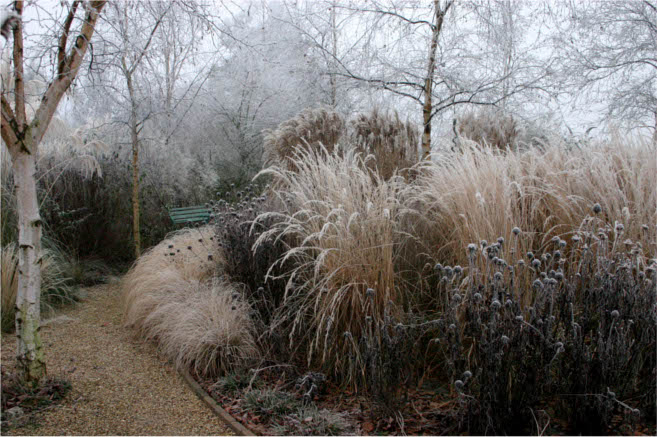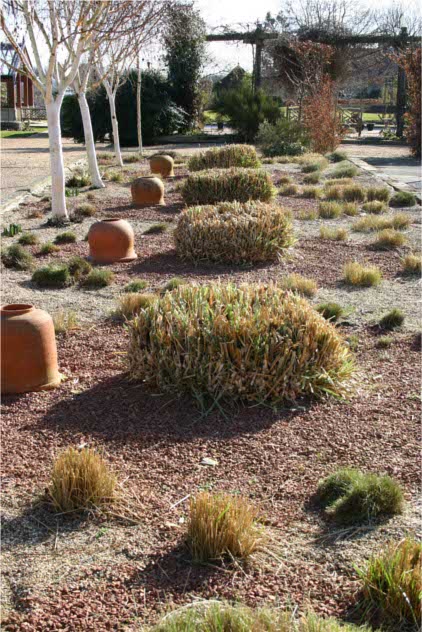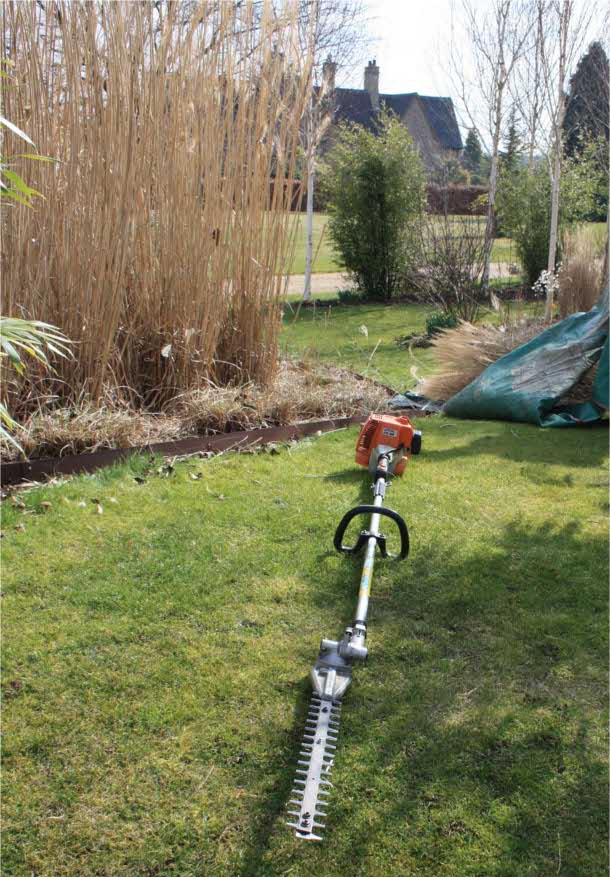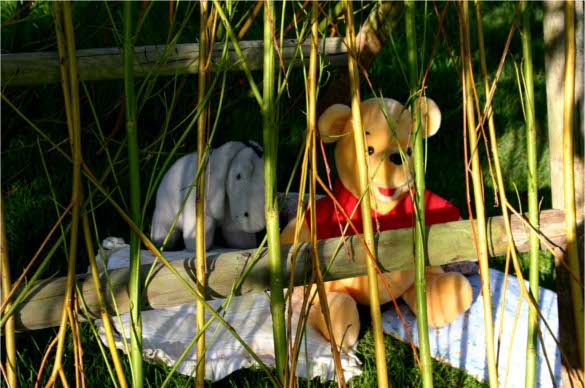
Our Winter Garden was very late in reaching its zenith when grasses, barks, stems and bulbs finally came together in one wonderful tapestry. The prolonged frosts and snow delayed the aconites and snowdrops by more than four weeks. To say I was impatient was an understatement!
However, while the bulbs took their time in proclaiming the end of winter, the colourful stems and grasses remained the star performers. It is only during the past two weekends that we have finally cut them down. It is a job I hate doing because I enjoy them so much and know that I will miss them. It will be another three months before the stipas and calamagrostis grasses really make an impact again. In the case of miscanthus and pennisetums it will be six months before they come into flower. But it is well worth the wait for then we will have continual visual therapy! By cutting them down, it gives us a chance to look out for weeds amongst them and most importantly, it gives the plants a clean start.

The action plan is repeated each year in the second half of March. We use a hedge trimmer to cut, and several large green plastic sheets to put the cuttings on. So one of us cuts while the other, wearing thick protective gloves, clasps the grasses, and once cut, places them on the mats.
After a while we swap jobs. The calamagrostis and stipas are easy, the miscanthus are OK but long. The pampass are horribly sharp while the pennisteums grow so well they form a thicket and are hard to disentangle. But all are fine really. They are light and easy to move once cut. Then the borders need to be cleared of debris. We do this by picking up any big bits by hand but then blow the rest off on to the grass where we have a Billygoat machine which hoovers up the mess.

We have three substantial borders of grasses and herbaceous plants (sedums, bidens and echinaceas) which generally means two weekends work. (We do all our gardening mostly at weekends because we both work full time). I know the books say cut the deciduous grasses back to within a few inches of the soil and just rake out the thatch in the evergreen grasses. But we cut the lot down including the evergreen seslerias and stipas.
Then it’s the turn of the perovskias, cornus and willows. All these shrubs get reduced close to last year’s cutting points. That’s as low as we possibly can without going into old wood; that is unless we want some Cornus for example to be higher than others. Up to now, Cornus Mid Winter Fire has been treated differently with no cutting at all for the first three years, then only cutting out one third. But this year we have decided to go down low, so that all next year’s growth will be a fantastic rich fusion of warm pinks and orange…my favourite! Last year I made the willows and some of the coloured cornus stems into an Eeyore House for children to play in during their visits. It was so pretty when I first did it and then all the colour disappeared. So it’s time to renew and give it extra cladding on its roof! Recycling at its best! The buddlejas and winter flowering viburnums get cut back now too. And, so too the Rubus cockburnianus. It’s a brute. We have three brilliant plants all with ghostly white stems but did I mention the thorns. It’s definitely a job with gloves and remote control hedge trimmer!

We are next open on two Bank Holiday Sundays in May. Make a date in your diary and bring a friend along; refreshments will be on offer as well.
Open to the public on Sundays 2nd May and 23rd May from 12-5pm;
Entrance £4.50, children free.
Kathy Brown is a garden designer, please see her website for further information.


Leave a Reply